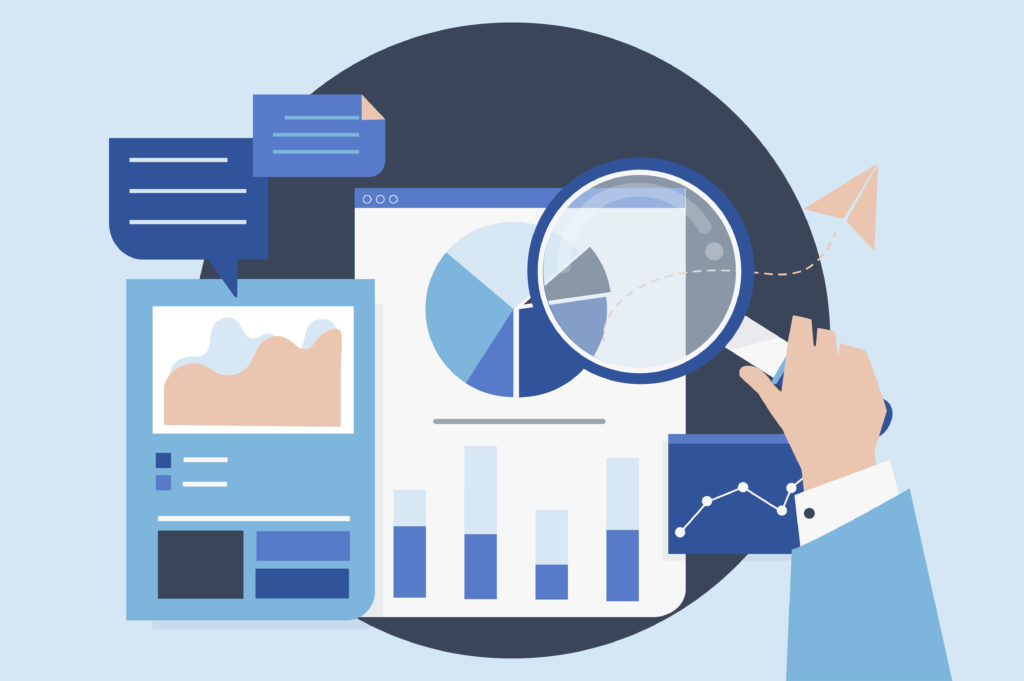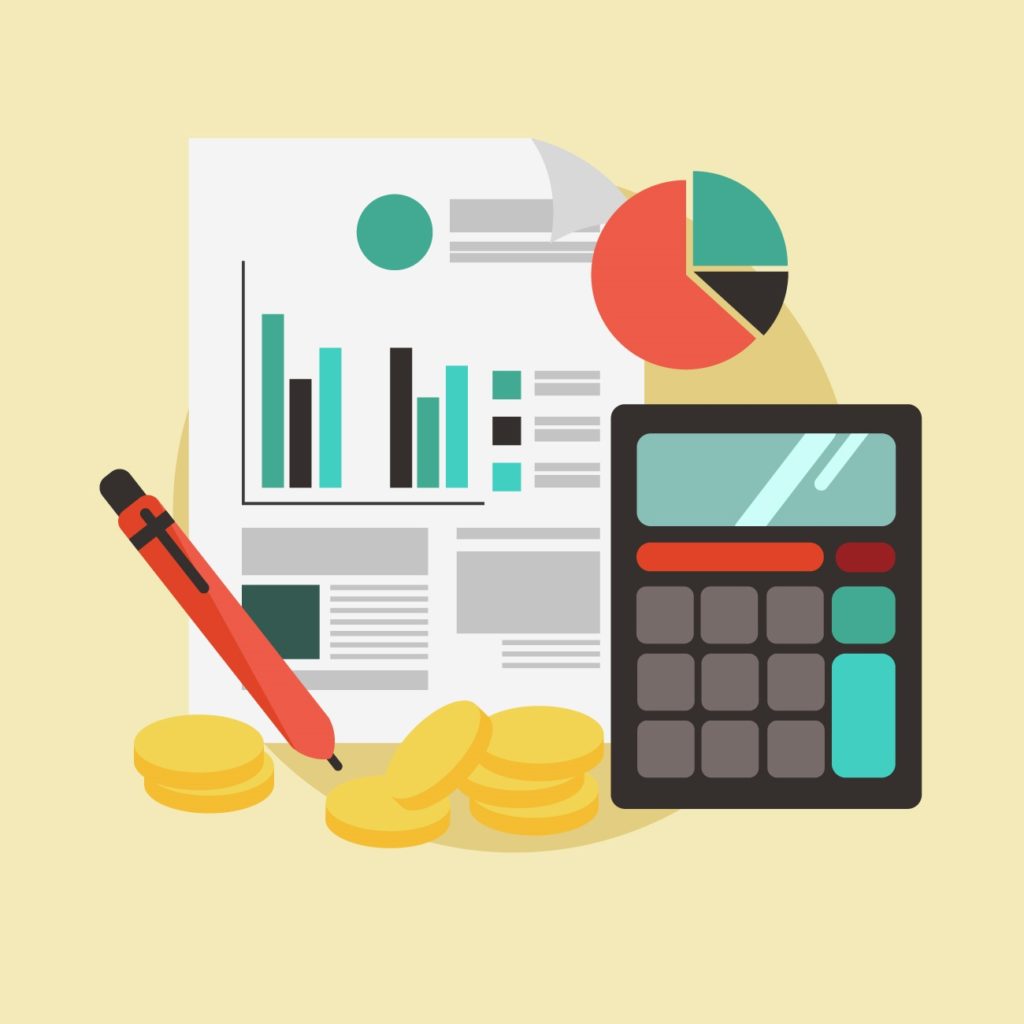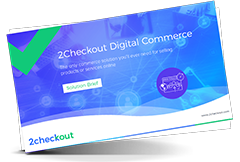Given the current context, having a digital presence is more important than ever. Although there has been a drastic shift in people’s spending habits, consumers and businesses are still buying more and more online and anything they want today they can easily find on the web. Therefore, moving your business online can help generate much-needed revenue to keep your operations going.
For sole traders or small business owners, establishing exactly what you need to do may seem like quite a challenge. That’s where writing a business plan comes in, and we’re here to guide you through the process.
Similarly, if you are just starting out, your eCommerce business begins with a simple idea. To take that idea and truly make something of it, it needs a business plan. Otherwise, you risk being too optimistic and ignore risk factors.

The business plan definition is handy as it acts as a guide to writing the plan. So, what is in an eCommerce business plan, you ask: everything that will help you build a business primed for the future.
Success comes from avoiding jumping in without knowing how to swim and doggy paddling your way through. Success comes from thorough analysis of all the facts.
A plan is important for several reasons:
- It mitigates risk, for one. By thinking through all of the potential angles, it saves you the time and money that you would have spent trying various angles without critical thought and realizing that the pieces weren’t going to fit together as you had assumed.
- Secondly, it is the closest guarantee of a viable business because it forces you to address possible concerns or problems .
- Thirdly, it helps people get on board with your idea. But, they can only understand it if you understand it. This is essential to move your business forward swiftly, as well as get funding from a bank or investors.
Ultimately, a business plan for an eCommerce business gives direction by bringing an immense amount of clarity.
The business plan format is generally paragraphs, but if you are using it just for yourself, it’s okay if you leave it as bullet points. It is, after all, a living document — always up for change. As you grow your business, you’ll regularly amass new information, which will change some elements of your plan a little, and some elements a lot.
Because a business plan is such a key driver of a business’ success, we will demonstrate how to write a business plan for an eCommerce site step by step. As a starting point, write it for the person who will be reading it. Make it simple — keeping it to the point (supporting documents can always be provided for people who need more detail).
How to make an eCommerce business plan
Here are the main sections of a business plan for an eCommerce store. Challenging yourself to think through each section is a crucial step in a successful business.
- Executive summary/ Company overview
- Problem/ solution
- Market research
- Competitive Analysis/ Product differentiation
- Business model
- Financial plan
- Proof of concept
- Marketing
- Operations
- Legal
- Team
With the eCommerce business plan outline in hand, let’s take a dive into each section.
Executive summary
The executive summary gives the gist of your business plan — in one page — to someone who either doesn’t have time to read the full plan, or wants to know if they should give their time to the full plan. It’s good to have it in hand to quickly pique people’s interest. It should be convincing enough that they want to read the full plan.

You’ll want to include an overview of all the most important aspects of your business such as:
- your name and why you chose it
- the problem you are solving and your unique value proposition
- your mission and vision for the company
- your go-to-market strategy
- the team building this solution with you
- and your legal structure.
Write the executive summary last — once you have thought through each element of your business plan in great depth.
Problem/ solution
This section gives an in-depth explanation of the problem that you’ve identified. As you think about the problem, you come to an understanding of why it exists and what you can do to make it better.
Before you go too far with your solution, it is prudent to make sure that what you see as a problem is actually as big of a problem as you think it is. You wouldn’t want to create a solution that only you and a handful of your closest friends and family would buy. Because, after all, it will take some time and money to create. So, talk to lots of people and see if they think it is a problem, as well — a problem big enough that they want it fixed.

As you present your solution, you will include detailed information about the product or product lines that you will feature. Your solution should solve the problem in the right way, making life easier, so consider it from all angles.
Proof of Concept
If you’re creating an entirely new solution, or even a new spin on an old solution, you’ll want to explain how you’ve proven that your concept will work and be profitable. You can prove your concept by talking directly with your target market and beta testing with them.
To have people beta test, you must create a prototype — a raw version of your product. You’ll want to have already talked to many people to make sure that it is worth your time building a prototype. Testing of the prototype will be the next phase. Do not go into your beta testing blindly. Know exactly what you want to get out of the experience and what you will do with the information. If you do not have a clear vision for the testing phase you may end up with too much information that you do not know what to do with, or end up with the wrong information altogether.

To incentivize people to provide their feedback you can consider offering gift cards or free products. Remember that their time is not only valuable to you, but it is to them, as well. In your business plan, explain how you arrived at your proof of concept and if you patented the product.
Market research
It cannot be understated that an immense amount of research should be done. You almost cannot do too much. Amassing well-rounded knowledge about your product’s industry will help you position it well in the face of competition and ensure there is enough money to be had.
To determine how big the market is, Google lots. Scour industry websites, statistics sites, census information, associations, academic research, and respected news outlets. All of these sources will provide you with valuable information on your industry. From this information you can make educated guesses on the size of the market and where it is heading. Additionally, you can use Facebook’s ad planner to see how many people fit your criteria, and compare search term interest over time on Google.

You’ll want the total addressable market to be large enough since you will only claim a small fraction of it (aka < 10%).
Not only will this research help you understand the industry, it will also help you understand your target market inside and out so that you can begin crafting your buyer persona. To strategically market to your customers you must know everything about them, including where their online “hang out” spots, how much discretionary income they have, where they live, how old they are, what their income is, etc. The list truly does go on and on.
Talking to lots of people will help you get to know your audience better, as well. Certainly don’t limit yourself to what the internet has to say.
The results of your research on the industry and target market will form the basis for the market research section of your eCommerce site business plan.
Competitive analysis
During your market research you will discover your competitors. Consider how they do business: their price point, how they distribute, what they are known for, etc. Indirect competitors — companies that have a product that is a substitute — should also be on your radar.
Once you know your competitors, you can differentiate yourself from them. There are various ways you can successfully do this. Your product can be unique in one way or another, you can offer lower prices, you could focus on a much smaller niche audience to better tailor your marketing, as well as many others.

How you choose to differentiate yourself all depends on the current competitive environment. Communicating the competition and how you stand up against it demonstrates your understanding of the landscape.
Business model
Your business model is a question of how you will make money or how you will monetize your idea — probably one of the most important questions.
While you might know your target market — who the end user of your product is — will you be selling B2B, B2C, C2B, or C2C? How will you acquire your product? Do you purchase it or manufacture it on your own? Where will you sell it? Will it be sold on your website, or on a marketplace? Do you have plans to cross sell or upsell?
Your business model needs to make sense because a flaw in the line of thinking will inhibit you from successfully selling your product.
Financial plan for eCommerce business
The financial plan for an eCommerce business is crucial in helping you price your product. Financial plans are rarely right from the get-go. But, it is important to at least have a starting point and a point to aim for. It pays to be realistic in your goals — think SMART: Specific, Measurable, Achievable, Realistic, Timely. Aim to put together the classic Projected Profit and Loss Statement (P&L), containing expected revenue from sales, direct costs, operating expenses, then depreciation, interest and taxes, and see where you stand and in which year/ month you estimate to break even.
Costs
Consider your one-time, fixed, and variable costs in terms of your income statement, balance sheet, and cash-flow statement. Then, in addition to costs, create a sales forecast. Remember to think SMART. It’s not doing yourself a favor to be overly optimistic. Because, in reality, you have very little idea what the exact outcome will be of your costs and sales, you can create three projections: one that shoots for the stars (a stretch goal), a reasonably feasible one, and one that shows what the financial situation might look like if things don’t go quite as planned — for the worse.

Each company is different, making needs and costs different. Common costs, however, are related to marketing, salaries, materials, software, office space, etc. You can estimate your marketing costs by looking at the platforms you intend on using for marketing and see what kind of reach they can give you at what cost. With that knowledge, determine how many visitors and then sales you will get, therefore telling you how many people you need to reach at the top of your funnel.
Revenue
To have an idea of your revenue, you must know at what price point you will sell your product. You can base your pricing per unit of product around that of your competition. Do you want to sell at a higher cost than them because you want to communicate higher value? Or do you want to sell at a lower price?
Price is a distinguishing factor of a company and will define your name. Whatever price point you end up choosing will affect how much you can spend to acquire your customer (also known as CAC or customer acquisition cost). The price at which you sell your product will be in direct relation to the costs you incurred to obtain the product or any of the raw materials to create it. After all, you must turn a profit.
With your priced product in hand, create a sales forecast spreadsheet. This is just a forecast because you do not yet have any real numbers. Be certain to estimate your sales based on your own capacity and not entirely on the market size available to you. How much can you reasonably manufacture? How much can your salespeople sell?
As the years go by, you will become more and more efficient in your production and sales, so you will be able to sell more while incurring a lower cost.

If your start-up costs seem a little too high for what you can get for your product you have several options: figure out how you can decrease costs, or get a bank loan or investors, whichever is most appropriate for your business. It’s one thing for your start-up costs to be disproportionately high, but it’s another to have high costs such that your sales cannot meet the costs. That is unsustainable.
You’ll want to make financial projections that are monthly for the first year, and then 3- and 5-year projections. The income statement features your revenue sources and expenses, revealing a profit or loss for your company. It is perfectly acceptable to operate at a deficit initially as start-up costs can be high depending on the industry and product type. The balance sheet communicates the equity that you have in your business based on the liabilities and assets. The cash-flow statement is similar to the income statement, however it takes into account when money is coming in or leaving so that you can plan for when cash might be low.
Marketing
How will your customers discover that you exist and have the solution to their problem?
In this section, you will detail all the places you intend on having a presence to get your audience into the top of your funnel and keep touching them throughout their decision-making process. You must know how many people you can reach for each marketing method you intend on using, and what conversion rate you can anticipate.
Depending on your product, your marketing plan may include email marketing; paid marketing, such as Facebook ads and influencers; and organic marketing, such as SEO, content, and social media. No matter which marketing methods suit your industry, product, and use, detail what information you need in order for your plan to be successful.
Operations
This part of your business plan will demonstrate that you know how you will run your business. Running an eCommerce business takes many resources. There is the product side, and there is the support side. What are all the physical goods that you need and who will supply those for you? Do you need facilities to store, ship, or manufacture inventory? If you are manufacturing your inventory, what tools will you use to do that?
Then there are the tools that are used in the office that might not be essential to producing your product, but they are essential to selling and marketing it. These are the tools that will signal to your customers and stakeholders whether you are operating smoothly or not. They will include your email marketing tools, payment processing tools, customer support tools, accounting, and billing, just to name a few.
Conclusion
Creating an eCommerce business plan can be challenging. Do not despair — you are up for it!
The keys to success for the business plan for an eCommerce store are to think through each section of this outline one at a time — step by step. That way, you won’t get overwhelmed by it all. Just remember, a simple business plan in the standard business plan format is better than no business plan.
Want to learn how 2Checkout can help you tackle the complexities of eCommerce, globally? Check out our Digital Commerce Solution Brief!






